
You have a concrete slab to cut, and an angle grinder is the only power tool on hand. Using the wrong tool can be dangerous and inefficient. So, you need to know if it’s possible.
Yes, you can use an angle grinder to cut concrete, but only for small, shallow cuts. You must use a diamond-tipped blade made specifically for masonry. For larger, deeper cuts, the angle grinder lacks the power and depth capacity of a dedicated concrete saw.
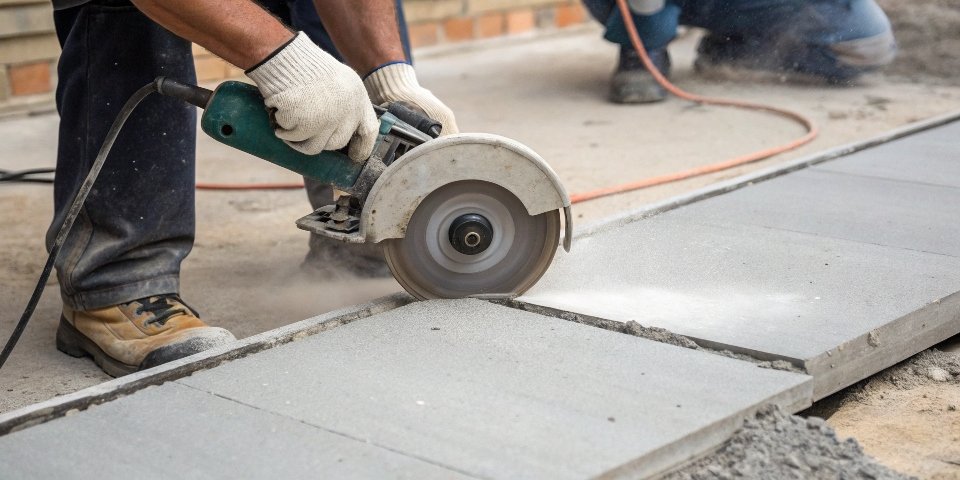
It’s a question we get all the time from our clients. While it is technically possible, there’s a huge difference between making a small adjustment to a paver and trying to cut out a whole section of a driveway. Understanding the limits of your tool is key to getting the job done safely and effectively. Let’s break down exactly when this is a good idea, and when you need to call in a bigger tool for the job. We’ll go over the right blades, the right grinder size1, and how to tell it apart from a more specialized machine.
Can I cut concrete with an angle grinder?
You want to use your angle grinder for a concrete job but are not sure where to start. Doing it the wrong way can cause serious kickback injuries or shatter the blade.
You can cut concrete with an angle grinder by equipping it with a segmented diamond blade. This setup is ideal for scoring lines or making shallow cuts under two inches deep. Always use water to control dust and wear full personal protective equipment (PPE).
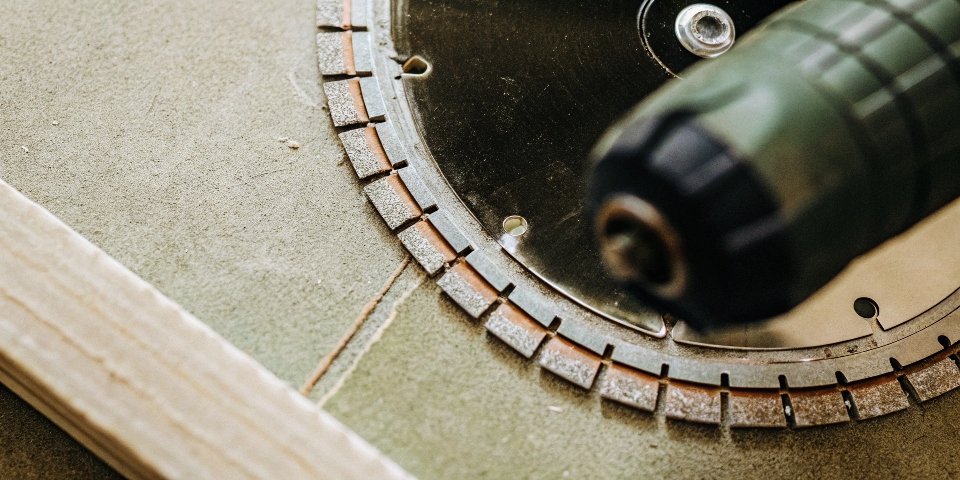
At our factory in Henan, we manufacture a wide range of diamond blades. I’ve seen exactly what happens when the right tool meets the right job, and when it doesn’t. For cutting concrete with an angle grinder, success comes down to preparation and using the correct blade. A standard abrasive wheel meant for metal will disintegrate instantly and dangerously. You need a diamond blade.
There are a few types of diamond blades to consider:
- Segmented Blades: These have notches (segments) around the edge. They offer a rough, aggressive cut and excellent cooling because the gaps allow air and debris to move freely. They are the best choice for dry cutting concrete with an angle grinder.
- Turbo Blades2: These have a serrated but continuous rim. They offer a good balance between a smooth finish and fast cutting speed. They can be used for concrete but are also great for other masonry.
- Continuous Rim Blades: These provide the smoothest cut but generate the most heat. They are best for wet cutting tile or ceramic, not deep concrete cuts.
For an angle grinder, a segmented diamond blade is your most reliable option. Remember to make multiple shallow passes instead of trying to cut to full depth in one go. This puts less strain on the grinder’s motor and gives you more control.
What size angle grinder for grinding concrete?
You know you need an angle grinder, but you see different sizes available. Using a grinder that is too small will burn out the motor and waste your time.
A 4.5-inch or 5-inch angle grinder is fine for scoring lines or small touch-ups on concrete. For more demanding tasks, like cutting pavers or making deeper cuts, a 7-inch or 9-inch grinder is necessary for its superior power and cutting depth.
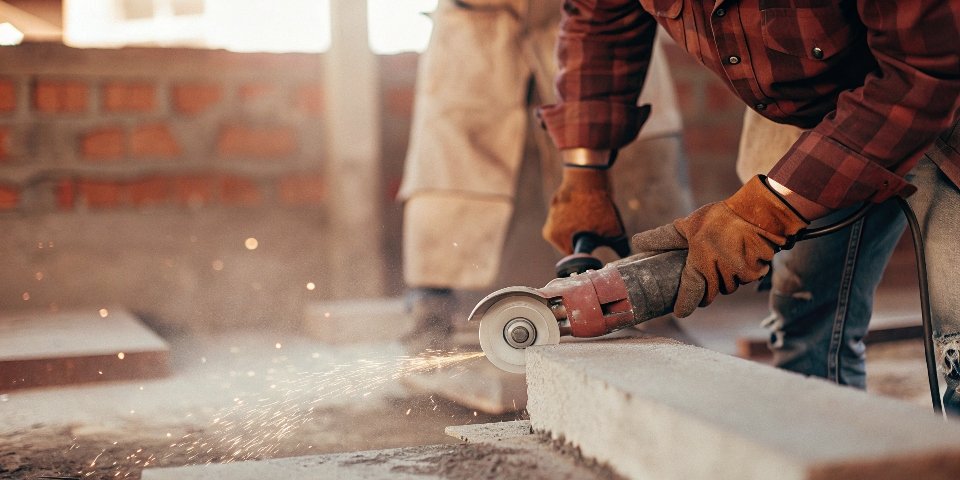
The size of the grinder disc directly relates to the power of the motor and the maximum depth of cut. Choosing the wrong one is a common mistake we see with our B2B clients who are trying to optimize their tool inventory. A small grinder just doesn’t have the torque to handle the resistance of thick concrete, leading to motor failure. Here’s a simple breakdown to help you choose.
| Grinder Size | Typical Power | Max Cut Depth (Approx.) | Best Use Case |
|---|---|---|---|
| 4.5 inch | 5-9 Amps | ~1.25 inches | Small repairs, scoring, mortar removal |
| 5 inch | 7-11 Amps | ~1.5 inches | Small to medium jobs, paver trimming |
| 7 inch | 13-15 Amps | ~2.25 inches | Deeper cuts, small slab work |
| 9 inch | 15+ Amps | ~3 inches | Most demanding handheld jobs |
As a manufacturer, we always advise customers to look at the amperage (Amps) or wattage. A high-amp 4.5-inch grinder will outperform a low-amp 5-inch one. For any serious concrete work, we recommend a tool with at least a 10-amp motor. Pushing a small, low-power tool to its limit is the fastest way to destroy it. It’s better to have a slightly bigger tool that can do the job easily than a small tool that struggles.
Is an angle grinder the same as a concrete grinder?
The terms "angle grinder" and "concrete grinder" sound similar, causing confusion. You might buy the wrong tool for surface preparation, costing you significant time and money on a big project.
No, they are different tools. An angle grinder with a diamond blade is a versatile cutter. A dedicated concrete grinder is a larger, specialized machine made for leveling and smoothing large concrete floors using diamond cup wheels, not blades.

This is an important distinction. An angle grinder is like a multi-tool for a workshop; it can cut, grind, and polish many materials. A concrete grinder has one job: surface preparation on a large scale. A client of ours once tried to smooth a 500-square-meter warehouse floor using only 7-inch angle grinders. The project took weeks, they destroyed several tools, and the result was uneven. After they switched to a proper walk-behind concrete grinder3 with the right diamond cup wheels4 from our factory, they finished the rest of the job in two days. The difference is in the design and purpose.
| Feature | Angle Grinder | Concrete Grinder (Walk-behind) |
|---|---|---|
| Primary Use | Cutting, light grinding, shaping | Leveling, smoothing, polishing surfaces |
| Abrasive Used | Diamond blades, flap discs, wire brushes | Diamond cup wheels, polishing pads |
| Ideal Job Size | Small, detailed work, cuts and edges | Large areas (floors, patios) |
| Dust Collection | Limited, relies on a separate vacuum attachment | Integrated shroud and port for vacuum system |
| Handling | Two-handed, versatile angles | Walk-behind or large ride-on models |
Think of it this way: you use an angle grinder to cut a pipe or shape a metal bracket. You use a concrete grinder to prepare an entire floor for an epoxy coating. Using an angle grinder for a large floor-smoothing job is like trying to mow a football field with scissors. It’s the wrong tool for the task.
Can you use a regular grinder for cement?
You have a standard angle grinder with a regular abrasive disc for cutting metal. Trying to cut cement with this setup is extremely dangerous, as the disc can shatter on impact.
You can use a standard angle grinder tool on cement, but you must replace the regular abrasive disc with a diamond blade. A standard disc for metal will disintegrate within seconds on concrete, creating a serious safety hazard and failing to cut the material.
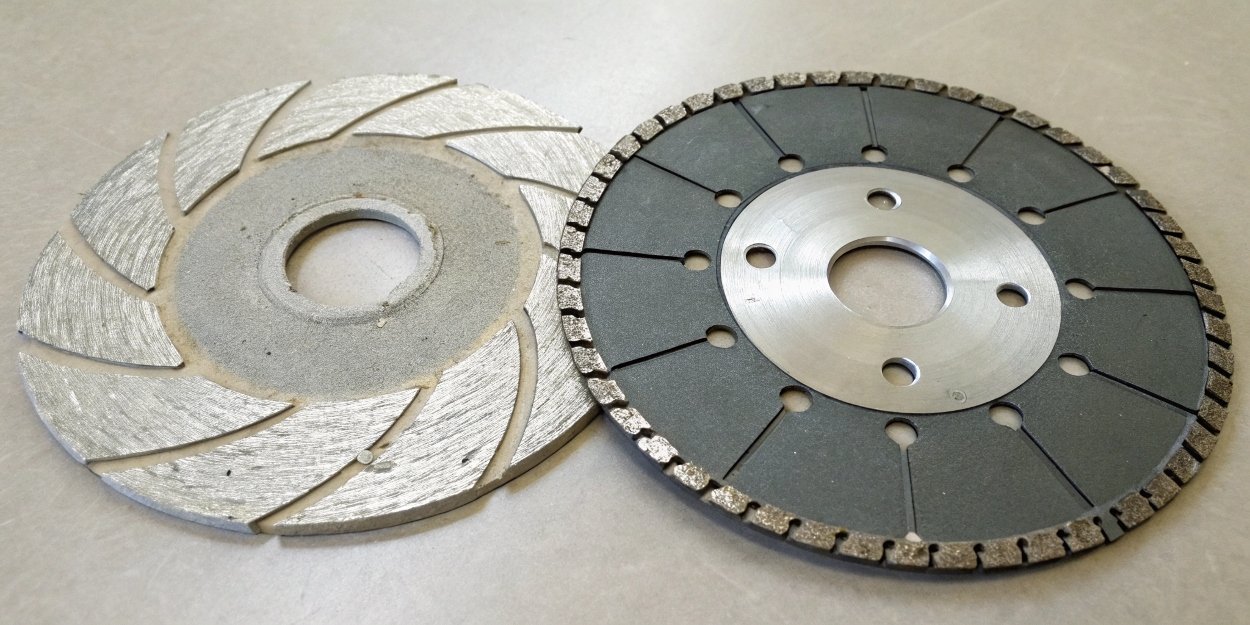
This is one of the most critical safety points5 we emphasize. The materials used to make these discs are fundamentally different. Right here in Henan, where 80% of China’s industrial diamonds are sourced, we produce both types of abrasives. We know exactly why you can’t mix them up. A standard cutting disc is typically made from conventional abrasives like aluminum oxide or silicon carbide, bonded together with resin. These materials are perfect for shearing through metal.
However, concrete is a composite of stone, sand, and cement. When a resin-bonded wheel hits this, the hard aggregates in the concrete act like a powerful grinder on the disc itself. The disc doesn’t cut the concrete; the concrete grinds away the disc at an alarming rate. It will quickly overheat, lose its structural integrity, and fly apart.
A diamond blade works differently.
- Superhard Abrasive: Industrial diamonds, the hardest material known, are embedded in a metal matrix on the blade’s edge.
- Grinding Action: The diamonds don’t "cut" in the traditional sense. They grind away the hard concrete material, turning it into fine dust.
- Durability: The metal matrix slowly wears away to expose new, sharp diamond crystals, allowing the blade to continue working.
So, while the grinder "body" is a multi-purpose tool, the blade or disc you attach to it is highly specialized. Using a metal-cutting disc on concrete is not just ineffective; it’s a recipe for an accident.
Conclusion
An angle grinder can cut concrete for small jobs with the right diamond blade and technique. For large-scale work, however, a dedicated concrete saw or grinder is safer and more efficient.
-
Get insights on choosing the right size angle grinder for your concrete cutting needs. ↩
-
Understand the unique features of Turbo Blades and their applications in masonry. ↩
-
Clarify the distinctions between angle grinders and concrete grinders for better tool selection. ↩
-
Learn about diamond cup wheels and their effectiveness in concrete surface preparation. ↩
-
Understand the essential safety points to consider when operating an angle grinder. ↩
Written by
leeon
You may also be interested in:
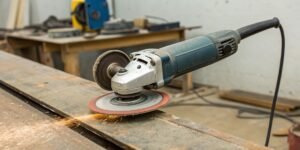
What is an angle grinder?
Are you confused by this powerful, versatile tool? You see it everywhere but are not sure what it does or if you need one. Getting

How do you cut bolts with an angle grinder?
Struggling to make a clean cut on a stubborn bolt? Using an angle grinder can feel intimidating, but it is a fast and effective method
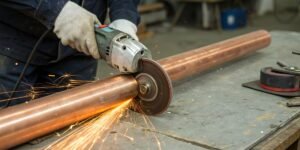
Can I use an angle grinder to cut a copper pipe?
Struggling with a quick copper pipe cut? Worried about damaging the material? An angle grinder is a fast solution, but using it wrong can be
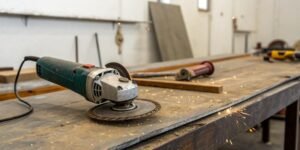
Can an angle grinder cut meat and bones?
Struggling to cut tough bones? Thinking of grabbing your angle grinder for a quick solution? This powerful tool seems like an easy answer, but it’s
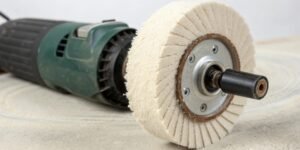
What is a buffing wheel used for?
Dull, scratched surfaces can ruin your products. This costs time and money. A buffing wheel is your tool to restore that perfect, professional finish everyone
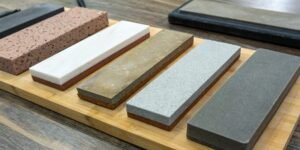
What is the best type of sharpening stone for kitchen knives?
Your kitchen knives are getting dull, making simple tasks like slicing a tomato a frustrating chore. A dull knife is a dangerous knife, but choosing
